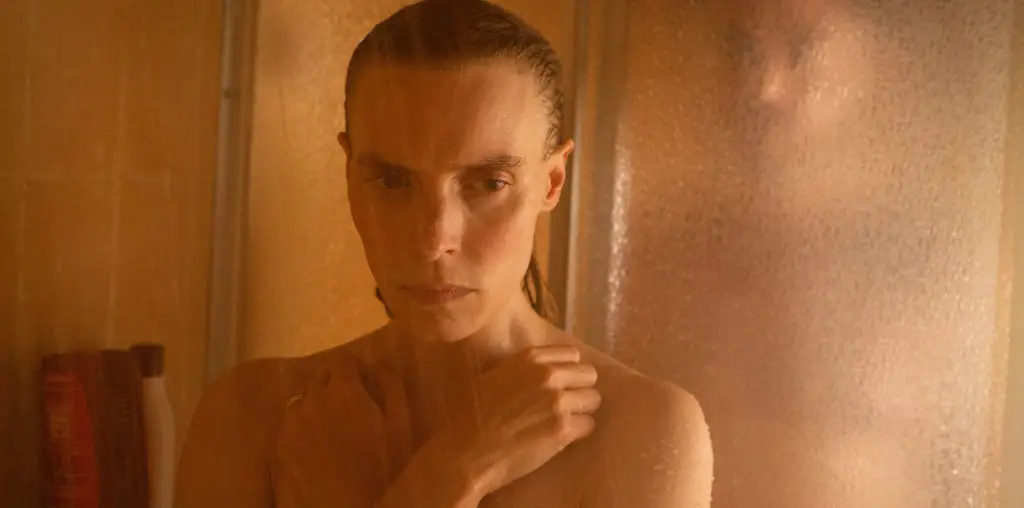
This scary, visceral, black and white film begins in almost total darkness, through which the viewer faintly senses unpredictable movement through unknown terrain. The film’s visual pallette is limited in the beginning to black with hints of dark grey, so that we fine-tune our senses and develop an ability to register the most nuanced variations. A powerful sense of anxiety is immediately created by the experience of moving through a large space without being able to see anything clearly. The constantly flickering darkness resembles a landscape seen while driving past a fence or over a bridge at night.
A great deal of the impact of “Nine Through Twelve” comes from the masterful musical score, which uses a variety of electronically distorted sounds to create a slow crescendo of terror and madness which builds inevitably through most of the film’s 16 minutes. The effect is similar to the usual music for horror films, only with much more musical sophistication and power. The music evokes not cliched scary images, but quite genuine despair, horror, and rage.
As the images became more identifiable (although still distorted, blurry, and hard to see) I recognized empty and desolate institutional buildings, which I immediately felt were the site of an abandoned mental hospital, even before I learned from Michaud that this is in fact exactly what they were. Just as the music was occasionally punctuated by startling crashing sounds, the gloom of the images was punctuated by flashes of brilliant white. These flashes reminded me of the white light you sometimes see when something hits you on the eye, and I experienced them as unnerving and almost painful. Periodic scratches in the film emulsion shuddered along the edges, seeming to match the shivers I felt from the creepy music and images.
The film reached its climax with an image of a lone, bleak, towering building, with a black fire escape wrapped around it. As the music climaxed with pitiable screams of torment, I couldn’t help thinking of Nazi gas chambers or of the lone tower where Rudolph Hess was kept prisoner. Sped up images of white clouds overhead reinforced the association with poison gas.
The film ends with a shadowy figure walking between the buildings. I couldn’t decide whether this figure was approaching or leaving, and this ambiguity fit right in with the mood of uncertainty that dominates the film. The figure could be the evil person who caused all the suffering implied in the film, coming after me, or, the film could equally imply that I was the crazy one, chasing after one more victim.
“Nine Through Twelve” is an intense, absorbing journey into a very dark place. The literal darkness of the images evokes a state of being blinded by rage and fear. The quality of the score, and the sureness with which Michaud creates images to embody and expand on the world of the music, show a mastery and a depth rare in experimental film. My only quibble is with the title, which neither seems to add anything to the film, nor to be truly neutral (as something like “Study #9” would be.) Michaud has created an abstract horror film which aims not create cheap thrills, but to immerse the viewer in the madness of the human soul.
